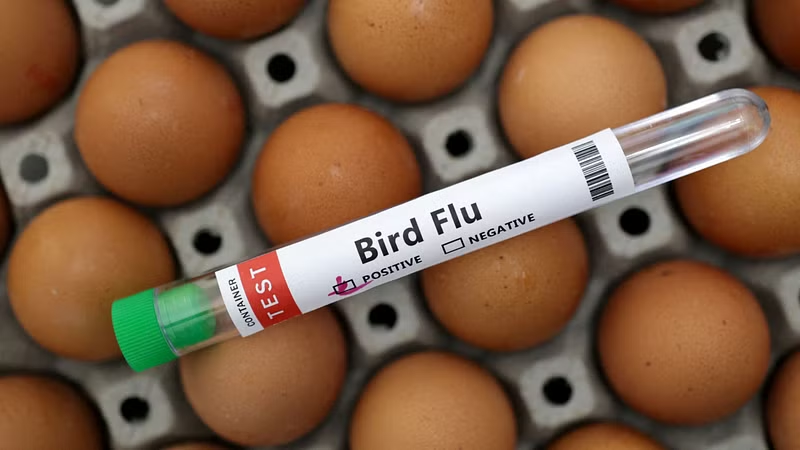
New Delhi: The recent emergence of a human case of H5N1 bird flu in Canada has sparked renewed concerns about the potential for a larger outbreak.
A teenager in British Columbia is currently in critical condition, being treated for acute respiratory distress after testing positive for the virus. This is Canada’s first confirmed human case of the strain, and it has renewed the questions about the risk of a new pandemic or potential lockdowns.
The teenager, whose identity and exact age have not been disclosed, was reported to have been healthy prior to falling ill, with no underlying health conditions, according to a report broadcasted on NBC’s daily news show Today.
British Columbia’s provincial health officer, Dr. Bonnie Henry, confirmed in a press briefing that the teen had not been in direct contact with birds or farm animals but had interacted with pets, including dogs, cats, and reptiles.
The source of the infection is still under investigation.
The Public Health Agency of Canada also confirmed that the patient is infected with the H5N1 strain of bird flu, which has been spreading among birds, poultry, mammals, and, in rare cases, humans. The recent case follows a larger outbreak of H5N1 in the U.S., where 46 human infections have been reported so far this year, in several states, including California, Colorado, and Texas.
While most of these cases involved direct exposure to infected animals, the exact cause of the virus’s spread is under the close scrutiny of health officials.
What is H5N1 bird flu?
Bird flu, or avian influenza, is a viral infection that primarily affects birds, but it can occasionally infect other animals and humans. H5N1 is one of several subtypes of avian influenza and has been responsible for several previous human infections.
Although the virus has been circulating since 1997, it has not yet evolved to spread easily from person to person. The majority of human cases have been linked to direct contact with infected animals, particularly poultry or livestock.
Dr. Amesh Adalja, a senior scholar at the Johns Hopkins Center for Health Security, explained that while the current outbreak of H5N1 is a concern, the risk of it turning into a pandemic remains low. “You can’t say the risk is zero. But of the bird flu viruses, it’s lower risk,” Adalja said.
Emerging infectious diseases, however, are unpredictable, as noted by Dr. Ian Lipkin, a leading expert on viral threats at Columbia University. “Could this virus evolve to become more transmissible? Yes. Has it done so thus far? No,” Lipkin said. “But nobody ever wants to say never.”
Could Bird Flu trigger a pandemic?
While the fear of a new pandemic is understandable, both experts agree that H5N1 is unlikely to spread easily between humans, which significantly lowers its chances of becoming the next global pandemic. The virus has had decades to evolve but still struggles to transmit efficiently from person to person.
Lipkin said that while the risk remains low, it is not possible to rule out future mutations.
“Could this virus evolve to become more transmissible? Yes,” he acknowledged. “Do I personally think it’s going to be responsible for the next pandemic? No. Could it be? Yes.”
However, experts are more concerned about other strains of bird flu, such as H7N9, which has caused significant human infections in China. H7N9, though not highly transmissible, has led to severe illness in people who were infected.
The question of whether bird flu could lead to nationwide lockdowns, similar to the COVID-19 pandemic, has also been raised. Experts are skeptical, particularly in the case of H5N1.
“I don’t think this strain is going to lead to lockdowns,” Dr. Adalja said. “Lockdowns are very blunt tools. We need more targeted measures.”
In fact, experts say that proactive measures such as increased animal testing and containment efforts would be more effective in curbing the spread of the virus than widespread shutdowns.
Dr. Lipkin also agreed, noting that, “If H5N1 were to become a major health problem, we would have to talk about containment,” but he expressed doubts that such drastic measures would be taken.
How can a bird flu infection be managed?
While there is no widespread vaccination program for H5N1 in humans, the U.S. government is preparing for the possibility of a future outbreak.
The Centers for Disease Control and Prevention (CDC) is developing vaccines for H5N1, and some candidate vaccines are already available in the U.S. stockpile. Meanwhile, in livestock, vaccine trials for poultry and dairy cows are already underway.
To prevent infection, the CDC advises people, particularly those working with animals, to avoid direct contact with sick or dead wild birds and poultry.
Dairy and poultry workers should use personal protective equipment while handling animals, and the public is encouraged to consume only pasteurized milk and thoroughly cooked poultry to avoid potential infection.
While the recent human cases of H5N1 bird flu in North America have raised alarm, experts agree that the current risk of a pandemic or widespread lockdowns remains low.
However, health authorities continue to monitor the situation closely, as the unpredictable nature of emerging infectious diseases means that the situation could change. For now, preventive measures and vigilance remain the most effective tools in managing the spread of the virus.




